Aurora Municipal Airport (ARR)
Aurora Municipal Airport (ARR) is a medium sized, primarily general and business aviation airport. ARR is located a little more than 25 miles southwest of the Chicago O'Hare International Airport and just west of the city of Aurora. It can be a convenient alternative to other more congested airports. The airport has intersecting runways, including one that is sometimes used as a taxiway. Service areas and parking are located on the southeast side of the airport. View a printable Pilot Handbook of the ARR information found on this Web page.
Know Before You Go
ARR Tower Hours of Operation 0700L-2100L
Administrative Office Open 0730L-1530L M-F
Business Phone 630-466-5610
The airport configuration consists of RWY 9/27 and intersecting RWY 15/33. Though still depicted on the Airport Diagram, RWY 18/36 is closed indefinitely.
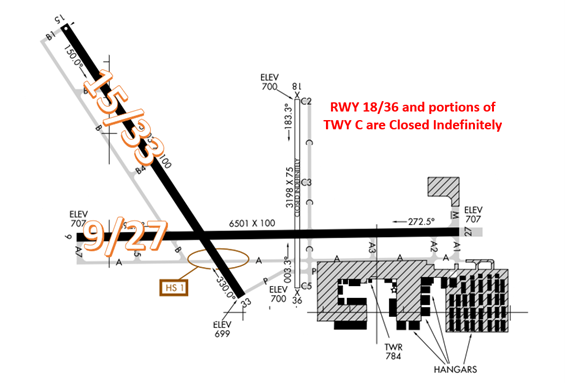
The airspace at KARR is Class D. (Refer to Sectional Chart)
Below find various ARR-specific information and things to be aware of, as well as general information to inform your preflight planning. This will be reviewed quarterly and updated as needed. This information is to supplement the From the Flight Deck Videos that are produced by the FAA Runway Safety Group. Here you will also find information provided by the local air traffic controllers at the airport where you intend to fly. The information is subject to change. Not for navigation or legal* pre-flight action. Always refer to official pre-flight materials such as, but not limited to, NOTAMs, airport diagrams, VFR charts and airport construction notices for the latest airport-specific details.
Hot Spots
HS1 Pilots often miss the hold short markings for RWY 15/33 on TWY A. Maintain vigilance.
- This occurs when pilots are taxiing east or west on TWY A.
- This results in aircraft entering the Runway Safety Area causing a runway incursion.
- Though pilots are providing good readbacks and acknowledging hold short instructions issued by the controller, these occurrences continue to happen.
- RWY hold short markings and above ground signage are present to assist pilots in navigating this location.
- Ask the TWR if you are ever unsure of your instructions or position.
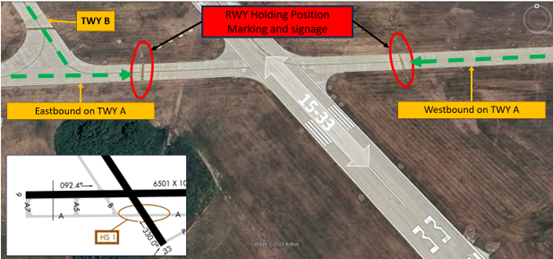
Wrong Surface Risk
- Whenever a TWY runs parallel to a RWY, the risk of landing on a TWY increases.
- Both TWY A and TWY B are parallel to RWYs at ARR.
- If available, back up all visual approaches with an instrument approach to help ensure that you are lined up for the correct surface.
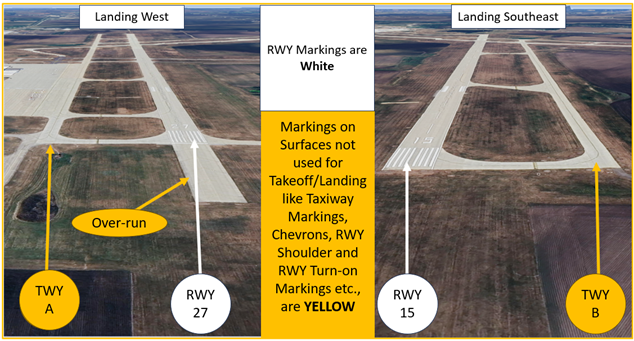
Surface Risk – Movement Area Cautions
- The Movement Area Boundary marking runs the length of the ramp along TWY A and on the eastside of the ramp at TWY P.
- From the primary portion of the ramp, TWYs A2 and A3 provide direct access to RWY 9/27.
- When issued taxi instructions pilots sometimes miss the turn onto TWY A and enter the Runway Safety Area (RSA) for RWY 9/27.
- RWY hold short markings and signage are present on both A2/A3.
- Pilots need to understand their assigned taxi route prior to beginning to taxi.
- If you are ever unsure of your instructions or position, ask the TWR.
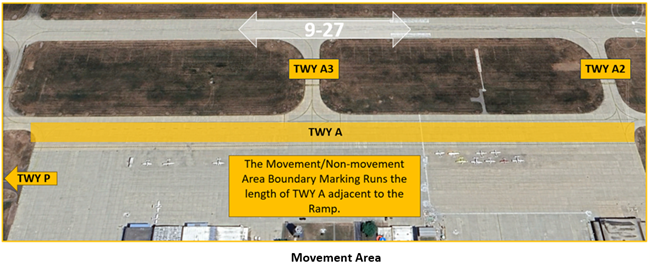
Traffic Patterns
- Due to noise mitigation procedures for the surrounding communities and visibility of the aircraft from the TWR, it is preferential to keep aircraft on the north side of the airport when using RWY 9/27 and on the west side when using RWY 15/33.
Ground Control
- TWY A is connected to the ramp. Pilots should use caution when taxiing onto TWY A from the ramp, as many pilots have confused it with RWY 9/27.
Runway Crossings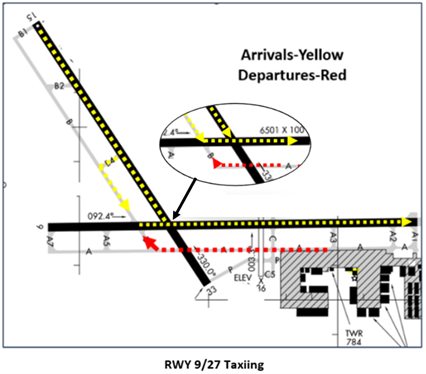
- When RWY 15 is in use, TWR sometimes hold aircraft that have landed RWY 15 short of RWY 9/27 on TWY B or will have landing aircraft exit onto RWY 9/27.
- TWR will then instruct the aircraft on TWY B to turn left onto RWY 9/27, cross RWY 15/33 and taxi to the ramp via the appropriate TWY.
- This practice allows the outbound routes via TWY A/B to remain clear of opposite direction arriving traffic when landing in this configuration.
- Note: Even though RWY 18/36 is closed, pilots still need a clearance to cross the RWY until it is completely decommissioned.
Takeoff/Departure
- Please request a short delay in advance if you need 5 or more seconds in position before starting your takeoff roll.
Special Traffic (Military / Commercial / Helicopter, etc.)
- ARR has a flight school that specializes in high performance/aerobatic aircraft. They occasionally do pattern work in the Southwest aerobatic area 10 miles SW of ARR.
Additional Information
- ARR can get busy quickly. Actively listening on frequency is critical in maintaining situational awareness.
- Chicago Approach can transition aircraft through ARR airspace at 3000ft MSL without coordinating with ARR TWR. Controllers are actively scanning for conflicts, but 3000ft MSL is very congested in the Chicago area.
- Pilots should maintain vigilance for birds and other wildlife in the vicinity of the ARR. Migratory birds are especially active at and near ARR during the migrating seasons.
